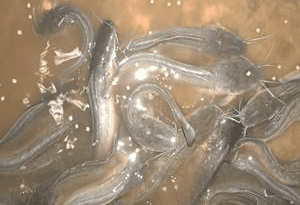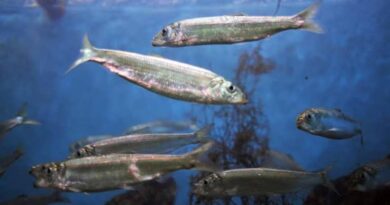Basic Concept of Fisheries Management
Fisheries management is a process which entails information gathering, analysis, planning, consultation, decision-making, allocation of resources, formulation and implementation and enforcement of regulations covering fisheries activities to ensure continued productivity and the accomplish fisheries objectives.
In this article, we consider the concept of fisheries management, and define terms related to fisheries management such as fisheries management plan, fisheries management strategy and fisheries management measures.
Fisheries management is “The integrated process of information gathering, analysis, planning, consultation, decision-making, allocation of resources, formulation and implementation, with enforcement as necessary, of regulations or rules which govern fisheries activities in order to ensure the continued productivity of the resources and the accomplishment of other fisheries objectives” (FAO,1995; Cochrane, 2002).
It is also the pursuit of certain objectives through direct control such as minimum mesh size to regulate size of fish at capture, increase the productivity of the resource; or a system of licenses to control entry and maximize economic returns from the fishery.
Indirect control involves creating an enabling environment by fisheries authorities for fishermen to control the resource, providing opportunities and incentives for communal control of the resource, e.g. community property rights for effective fishing effort or some of its components.
The main goal of fisheries management is to achieve long-term sustainable use of the fisheries resources.
Fisheries management entails a set of tasks aimed at ensuring that optimal benefits are obtained for users. Fisheries management draws on fisheries research, analysis and institutional processes of advice. According to FAO (1997), fisheries management can include:
Setting policies and objectives for each fishery or stock to be managed; taking into account the biological characteristics of the stock; the nature of existing or potential fisheries and other activities related to or impacting the stock; and the potential economic and social contribution of the fishery to national or local needs.
Determining and implementing the actions necessary to allow managers, fishers and other stakeholders to work towards set objectives.
The actions required include: developing and implementing management plans for managed stocks; ensuring that stocks and the ecosystem are maintained in a productive state; collecting and analyzing biological and fishery data necessary for assessment, monitoring, control and surveillance; adoption and promulgation of laws and regulations needed to achieve set objectives.
Consulting and negotiating with resource users and those in related activities or activities that impact fisheries such as groups engaged in riverine, lake, or coastal zone. The interests of fisheries should be considered and catered for in planning and integration of activities.
Working with users to regularly review the management objectives and measures to be sure they are still appropriate and effective
Reporting to governments, users and the public on the state of resources and management performance.
Approaches to Fisheries Management
There are several approaches to fisheries management. These include:
- Fishing quotas, total allowable catch
- Limits on number of fishing days and
- Restrictions on number of fishing vessels.
These methods cannot be properly monitored. Other methods used in fisheries management include:
Rights-based management of fisheries. This allows fishermen the right to determine the quantity of fish harvest over a long time by methods such as individual transferable quotas (ITQs) which can be traded.
Landing fees paid by fishermen to a designated authority based on the amount of fish caught. This removes the incentive for overfishing
Capping licenses allocated to fishing vessels, limiting engine power or vessel size.
Limited duration of fishing – Fishermen using available technology can still catch a lot of fish in short periods.
Ban on destructive fishing methods – explosives, poisons, etc.
Allocation of fishing rights to individuals or groups. Catch and effort are determined by the individual or group reducing the cost of monitoring.
Protected Areas are demarcated areas of water where all economic activities including fishing are not allowed in order for fish stock to recover.
Influencing consumers’ judgment through the work of agencies like the marine stewardship council and Friends of the Sea which certify products based on some agreed criteria (Schrӧder, T. World Ocean Review, 2013).
Read Also : Basic Concept of Fisheries Development
Fisheries Management Plan
This is a formal or informal arrangement between a fisheries management authority and interested parties or stakeholders.
It identifies the partners in the fishery, their roles, agreed objectives for the fishery and specifies the management rules and regulations which apply to it and gives details about the fishery to the management authority (FAO, 1997).

Fisheries Management Strategy
Fisheries management strategy refers to the sum of all the management measures selected to achieve the biological, ecological, economic and social objectives of the fishery.
Fisheries management requires an investment of time and resources to gather the needed information develop and agree on a management regime, to enforce regulations, and monitor the fishery.
An economically sound fishery should make acceptable returns on investments after accounting for the costs of management.
The management of fisheries to achieve specific goals and objectives requires the development and application of set rules to govern the conduct of fishers and the gear they use, those not permitted in the fishery, and those without rights of access to certain parts of the fishery.
Fisheries practices should target conflict reduction among fisheries resources users and non-fisheries users of resources.
Fisheries Management Measure
Fisheries management measure consists of any type of control implemented to contribute to achieving the objectives of the fishery. Management measures are classified as technical measures, input (effort) and output (catch) controls, and any access rights designed around input and output controls.
Technical measures can be sub-divided into regulations on gear-type or gear design, closed areas and closed seasons, minimum legal mesh size, a seasonal closure of the fishery, a total allowable catch (TAC), a limit on the total number of vessels in a fishery, and a licensing scheme to achieve the limit are all examples of management measures.
Fisheries Management Systems
Traditional management system refers to fisheries being managed by traditional government administration through village heads, district heads or religious leaders.
Modern management system involves administration by governments at local, state and federal levels.
Mixed systems involve both governments and traditional institutions working together either intentionally or inadvertently to manage fisheries.
The mixed system is dominant though the traditional management system is common and is effective in regulating fishing activities.
Fisheries co-management involves institutional arrangements made that facilitate the exchange of information and joint decision-making by state and resource users.
Fisheries Resources, Fisheries Management Unit, Fisheries Management Body and Fisheries Management Tools
Fisheries management unit refers to the physical areas being managed while the management body refers to the body managing the management unit.
Fisheries management tools include all the instruments to regulate the harvest of a fisheries resource.
Several management tools can be used in various areas such as taxes, permits, gear restriction, minimum sizes of catches, closed periods.
In summary, fisheries management is important to retain the sustainability of the fisheries resources. Information gathered, analyzed and interpreted can be used to make informed decisions about the state of the fisheries and environment. This is used to plan and strategize on management measures to adopt.
Read Also : Complete Waste Management For Restaurants









